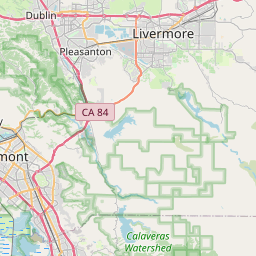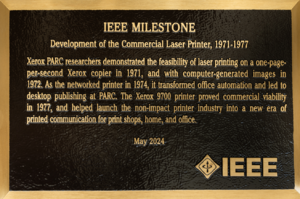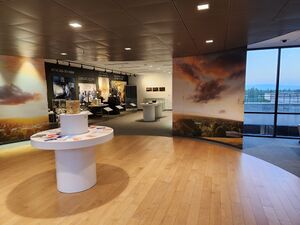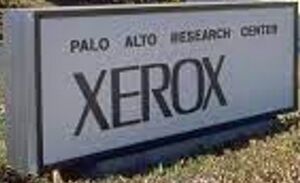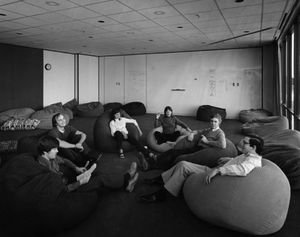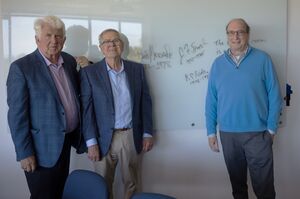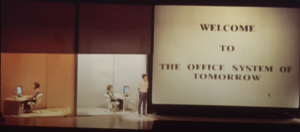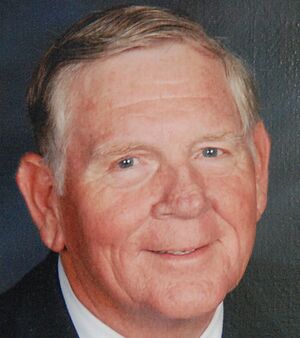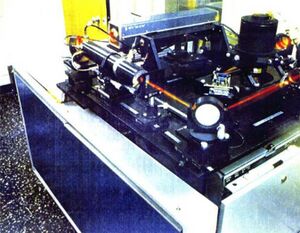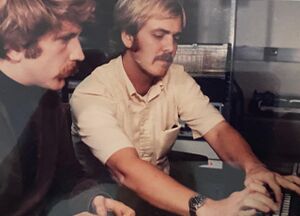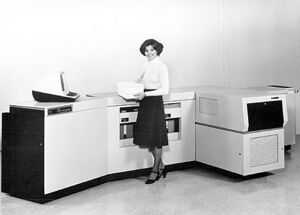Milestones:Development of the Commercial Laser Printer, 1971-1977
- Date Dedicated
- 2024/05/17
- Dedication #
- 252
- Location
- Palo Alto, CA
- IEEE Regions
- 6
- IEEE sections
- Santa Clara Valley
- Achievement date range
- 1971-1977

Title
Development of the Commercial Laser Printer, 1971-1977
Citation
Xerox PARC researchers demonstrated the feasibility of laser printing on a one-page-per-second Xerox copier in 1971, and with computer-generated images in 1972. As the networked printer in 1974, it transformed office automation and led to desktop publishing at PARC. The Xerox 9700 printer proved commercial viability in 1977, and helped launch the non-impact printer industry into a new era of printed communication for print shops, home, and office.
Street address(es) and GPS coordinates of the Milestone Plaque Sites
- Site 1: PARC (part of SRI International), 3333 Coyote Hill Road, Palo Alto, CA 94304 US (37.402370, -122.148354)
- Site 2: Computer History Museum, 1401 N. Shoreline Blvd, Mountain View, CA 94043 US (37.414757, -122.077679)
Details of the physical location of the plaque
- Site 1: On the back wall of The Innovation Museum, which is to the left of the front reception desk, and alongside 2 other IEEE Milestone plaques (Xerox Alto and Ethernet)
- Site 2: On the inside face of the front patio brick wall, near the museum's Main Entrance
How the plaque site is protected/secured
- Site 1: Building security; 8am-4:30pm access on weekdays
- Site 2: Building security; 24/7 access
Historical significance of the work
From Gary Starkweather’s induction into the Inventors Hall of Fame in 2012: "While working for Xerox in Webster, New York, Gary Starkweather began work on an idea for a laser printer, a machine that could print any image created by a computer. Computer printers did exist at the time but were large, awkward, mechanical machines that had many limitations. After creating a crude prototype, Starkweather transferred to Xerox PARC in 1971 to continue developing his idea. At PARC, Starkweather created SLOT, his "scanning laser output terminal," using a Xerox 7000 copier as his base. A laser beam carried digital information, and the copier then developed the imaged digital information to make a print. In 1977, Xerox launched the 9700 laser printer which would become one of Xerox's best-selling products. In fact, the original laser printer made billions of dollars for Xerox, the most commercially profitable product to come out of the PARC facility."
A 2020 Wall Street Journal story discusses how Starkweather's laser printer spawned a $2 billion/year business. A 2020 Los Angeles Times obituary notes that "He originally received pushback from his employer, Xerox. But his invention eventually became nearly ubiquitous in every office and home." The social significance of this invention was that it allowed anyone to readily print computer files including graphics, which enhanced social communications. A more detailed summary of the significance of this accomplishment is provided in this document. The story of the design of the laser printer is provided in the Dealers of Lightning book and in the Starkweather Oral History. Five key Starkweather patents are included below.
Obstacles (technical, political, geographic) that needed to be overcome
Prior to the laser printer, printing reproduced a fixed page image (copier technology) or generated a slow character-at-a-time output from computer data. The major obstacle was to find a means of generating computer data at copier printing speeds and to develop an optical system that could place the image into the copier. At the time, copier speeds greatly exceeded computer data processing speeds, and a computer driven optical system was not yet developed. The goal was to provide printing capabilities for computers to complement the development of the higher-power individual computer workstations that were being developed. Work was ongoing at PARC during this era.
Features that set this work apart from similar achievements
This invention commenced the era of high-speed single-page commercial printers, introducing this printing concept into both the commercial and consumer markets. Previous direct-contact line printers limited the quality and speed of computer reproduced images, which were being printed onto large spool-fed continuous-sheet paper stock. Invention of non-contact single-sheet laser printing led to the wide scale commercial adoption of computer based printing of higher quality custom images onto cut sheet paper. This concept of readily printing custom computer images onto cut sheet paper would eventually inspire development of other consumer market printers that came to fruition through the creation and application of different technologies.
Significant references
Supporting materials
- Media:A Decade of Reseach at Xerox PARC 1970-1980.pdf
- Media:Excerp from Gadwell via Thompson.pdf
- Media:Gary Starkweather - NYTimes.pdf
- Media:Laser Printer illustrations.pdf
- Media:Reilly, Edwin Milestones in Computer Science.pdf
- Starkweather, Birth of the Laser Printer, https://www.youtube.com/watch?v=BZFaQiItckU
- Starkweather, Invited Talk Univ. of S. Florida, https://www.youtube.com/watch?v=PiLDiWh6iBY
IEEE Spectrum Stories about Xerox PARC Milestone Inventions
- Xerox Parc’s Engineers on How They Invented the Future: And how Xerox lost it (October 1985)
- How the Graphical User Interface was Invented: Three decades of UI research came together in the mice, windows, and icons used today (September 1989)
- Draper Prize Awarded to Pioneers of the Networked PC: Former Xerox PARC team to share US $500 000 (February 2004)
- Of Modes and Men: Cut-and-paste, the one-button mouse, WYSIWIG desktop publishing—these are just a few of the user interface innovations pioneered by Larry Tesler (August 2005)
- Playing Woodward and Bernstein At Xerox Parc: Xerox Parc celebrates 40 years, while I look back on a little history of my own (September 2010)
- The Improbable Origins of PowerPoint: Here’s the surprising story behind the software that conquered the world, one slide at a time (October 2017)
- The Xerox Alto Struts Its Stuff on Its 40th Birthday: A live demonstration of a restored Xerox Alto shows how much it still influences computers today—and the lessons it has left to share (November 2017)
- Behind the Scenes at Xerox Parc’s Futures Day—40 Years Ago: Pulling off Xerox Parc's historical day of demos involved a borrowed airport refrigeration truck and an ax (December 2017)
- Early Soyuz Spacecraft Had a Peculiar User Interface, Says Charles Simonyi: The legendary developer went to space twice, and couldn’t help but notice the capsule’s quirky virtual interface (June 2019)
- Larry Tesler, the Computer Scientist Who Revolutionized the User Interface, Dies at 74: When you cut, copy, or paste today, take a moment to thank Larry Tesler (February 2020)
- Q&A: Adele Goldberg on the Legacy of Smalltalk - One of the language’s original developers talks about its influence on modern-day programming (August 2022)
- The Lisa Was Apple’s Best Failure: Its GUI, mouse, and software greatly influenced the Macintosh (January 2023) (credits the Alto GUI)
- 50 Years Later, We’re Still Living in the Xerox Alto’s World: The Alto transformed computing. And the changes stuck (March 2023)
- Smalltalk Blew Steve Jobs’s Mind: Its graphical user interface inspired change at Apple’s core (March 2023)
- Xerox Donates Legendary PARC Research Center: The lab that pioneered personal computing will become part of SRI International (May 2023)
- Honoring the Legacy of Chip Design Innovator Lynn Conway: The IEEE Fellow was a noted transgender-rights activist (June 2024)
- Ethernet is Still Going Strong After 50 Years: The technology has become the standard LAN worldwide (November 2023)
Dedication Ceremony
A Celebration of 50 Years of the Internet
- Blog with Photos from "50 Years of the Internet" Event
- Eileen Clegg's Internet Evolution Tapestry as discussed by her and Vint Cerf
Martin Wasserman Interviews re: the 50th Anniversary of the Internet
- Internet Pioneer Vint Cerf
- Internet Historian Marc Weber
- IEEE History Committee Vice Chair Brian Berg
SRI Story About This Recognition
Map

